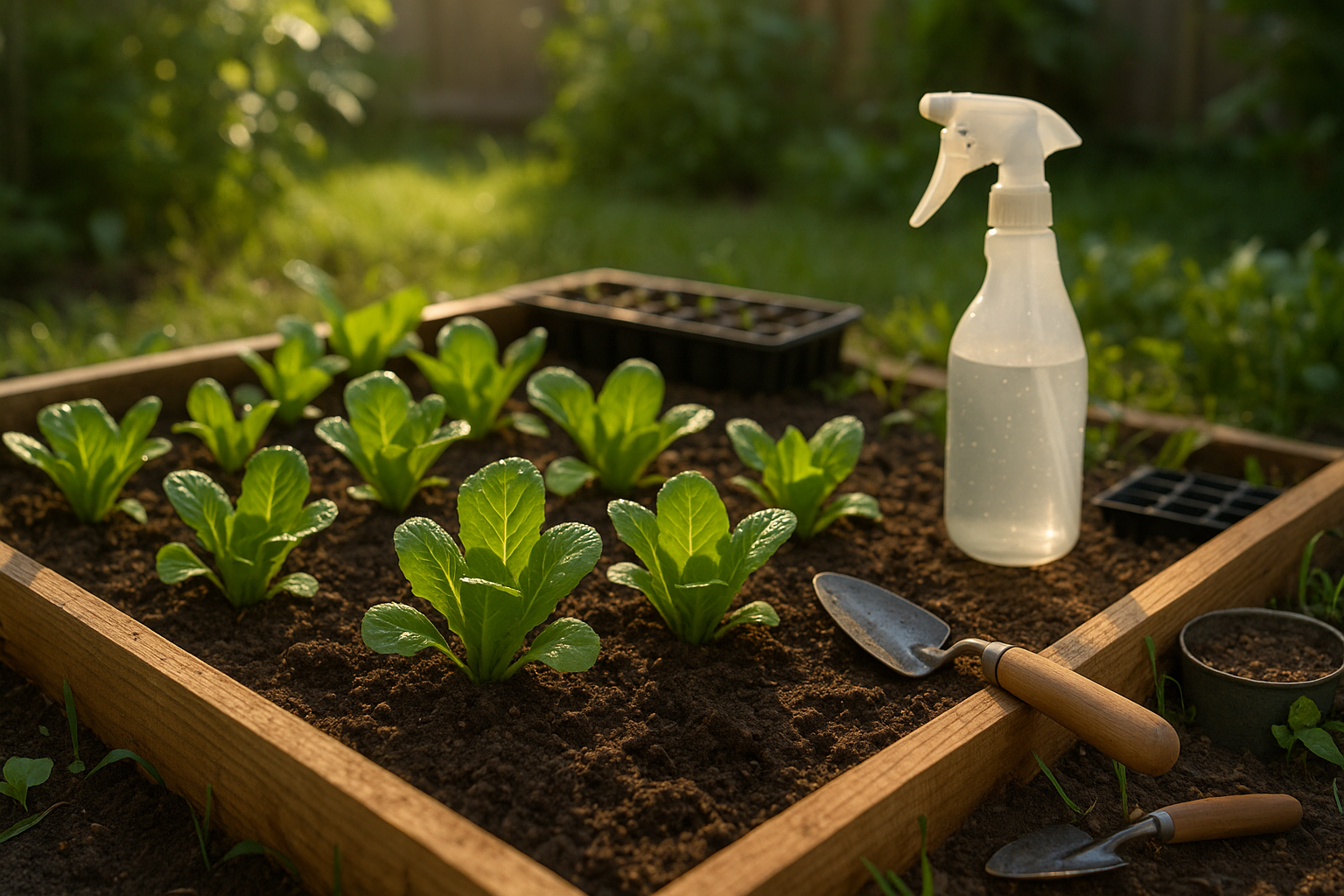Introduction
Growing lettuce at home has quickly become a favorite among gardeners, thanks to its fast growth cycle and how simple it is to cultivate even in small spaces. However, lettuce germination problems can catch many beginners—and even experienced gardeners—off guard, leading to patchy beds or disappointing harvests.
The key to a thriving lettuce crop actually starts long before any leaves appear above the soil; achieving successful seed germination lays the foundation for robust, healthy plants. Have you ever planted lettuce seeds only to find bare spots in your garden or trays, or wondered why some seedlings are weak or fail to sprout entirely? You’re not alone.
Lettuce seeds can be a bit particular about the conditions they need to germinate, from consistent moisture and temperature to proper light. This article is here to guide you through the most common germination problems, such as poor seed viability, incorrect soil temperature, and watering mistakes.
Along the way, you’ll get actionable tips and real-world solutions—like how to test old seeds for freshness or adjust your watering routine—so you can give your lettuce the healthy start it deserves and enjoy crisp, homegrown salads all season long.
Understanding Lettuce Germination
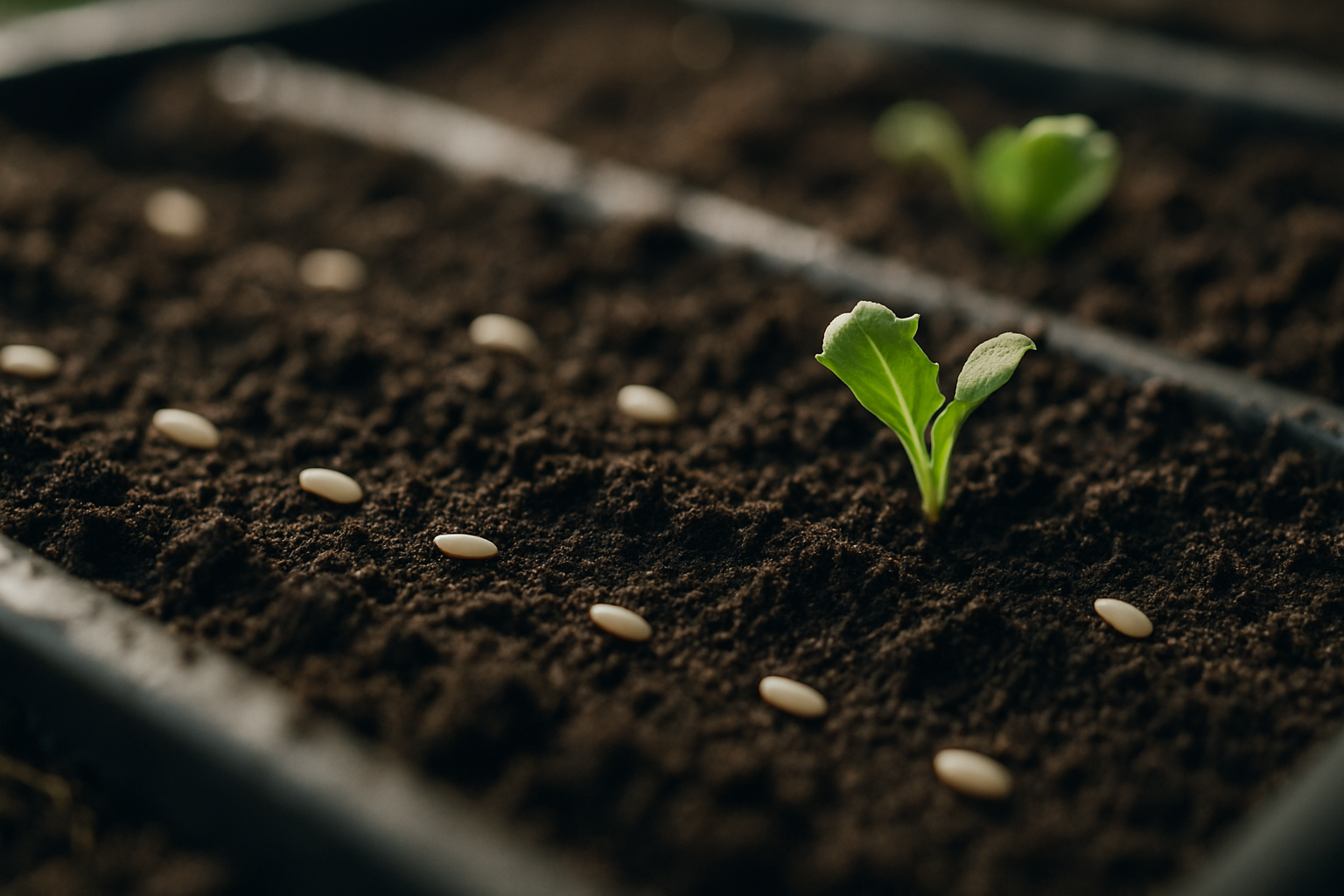
Lettuce seed germination is a delicate process that requires attention to detail, especially if you want fast and healthy sprouting. Typically, lettuce seeds begin to germinate within 2 to 10 days, with most varieties showing signs of growth in as little as three days under optimal conditions.
The seeds are small and don’t need to be buried deep—just lightly pressed into the soil or covered with a thin dusting, no more than 1/8 inch deep. Lettuce is especially sensitive to both temperature and light. Ideal soil temperatures for germination range from 60°F to 70°F (16°C to 21°C); if the soil gets much warmer, the seeds can become dormant or fail to sprout at all.
Unlike some vegetables, lettuce seeds also require light to kick-start the germination process. This means that a sunny windowsill for starting indoors, or a spot in the garden that gets plenty of indirect daylight, works best. Consistently moist—never soggy—soil encourages the seeds to absorb enough water for healthy development.
If you’re growing in containers, choose a fine, well-draining seed starting mix; if outdoors, loosen the top inch of garden soil and remove clumps or debris. Keep the surface damp by misting with a spray bottle until seedlings appear. Avoid letting the soil dry out, as this can halt the germination process.
By keeping an eye on temperature, moisture, and light, you’ll give your lettuce seeds the best chance at quick and robust germination, setting the stage for a bountiful harvest.
Common Germination Failures
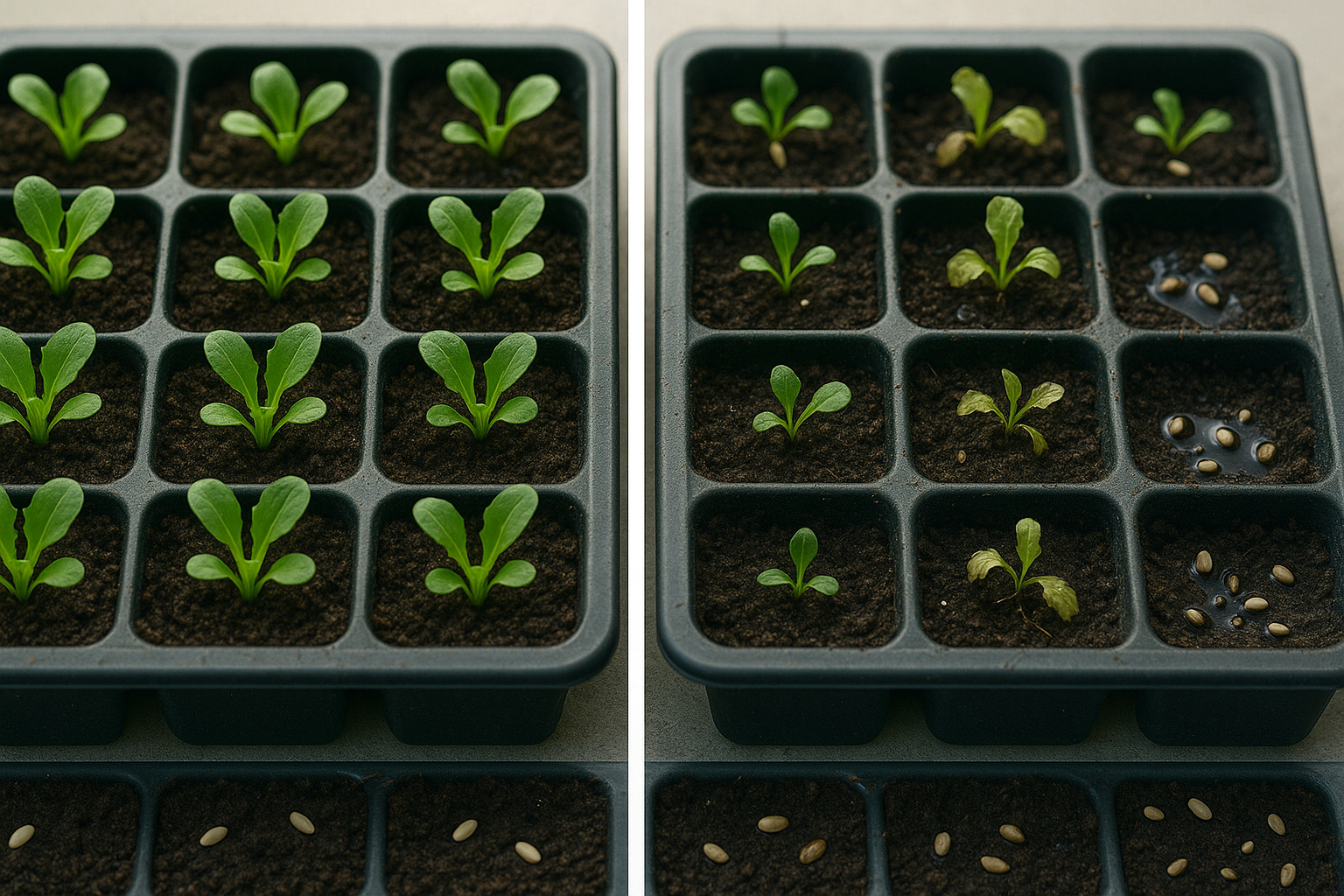
When seeds don’t sprout as expected, frustration often follows, but understanding common germination problems can help you get back on track. One frequent cause is old or expired seeds, which lose their ability to germinate over time. Before planting, always check seed packet dates or try a simple viability test—place a few seeds between moist paper towels in a warm spot and see if they sprout in a few days. If not, it’s time for fresh seeds.
Planting depth is another factor; burying seeds too deep can prevent delicate shoots from reaching the surface, while sowing them too shallow leaves them vulnerable to drying out or being washed away. Always refer to seed packet instructions for optimal depth.
Water is equally crucial: too much can cause seeds to rot, while too little leaves them dormant. The soil around your seeds should feel consistently damp but not waterlogged—using a spray bottle or a gentle shower setting on your watering can helps maintain this balance.
Temperature matters, too. Most seeds need warmth—typically 65–75°F (18–24°C)—to trigger germination. Using a heat mat or starting seeds indoors during cool spells can make a big difference.
Signs of trouble include delayed sprouting, sparse or patchy seedling emergence, or seedlings that suddenly collapse. If you encounter these, review your planting process: check your seed age, adjust your watering routine, and double-check temperature and planting depth.
With careful observation and a few tweaks, you can troubleshoot most germination woes and set your seeds up for success.
Environmental Stress
Lettuce seeds can be surprisingly sensitive to their surroundings, and even slight changes in environmental conditions may limit their sprouting success. Temperature is a major factor—if it’s too hot, seeds might remain dormant or sprout inconsistently, while cold soils can slow germination or cause rot before sprouting begins. For lettuce, the sweet spot is a soil temperature around 15–20°C (59–68°F); anything much higher or lower can spell trouble.
If you’re sowing in early spring or late fall, consider using row covers or starting seeds indoors to protect them from chilly nights. In summer, plant during cooler parts of the day or look for heat-tolerant varieties.
Moisture
Moisture is just as critical. Lettuce seeds need evenly moist—not soggy or dry—soil to break dormancy, but overwatering can suffocate roots and encourage mold, while underwatering leaves them parched and unable to sprout. A good tip is to use a spray bottle or fine watering can, aiming for dampness similar to a wrung-out sponge, and cover seeds lightly with soil to conserve moisture. Checking the top inch of soil daily helps catch any signs of drying or pooling early.
Sunlight
Sunlight plays another crucial role: lettuce loves bright light but can wilt quickly in harsh, midday rays. For healthy seedlings, look for a spot with full morning sun and light afternoon shade—think east-facing beds or use lightweight shade cloth during peak hours. If you’re growing inside, position trays near a bright window or use grow lights set about six inches above the foliage.
By carefully balancing these elements, you’ll give lettuce seeds the gentle, steady environment they need for a strong, even start.
Soil and Planting Medium Problems
Heavy, compacted soils often spell trouble for successful seed germination. When soil is dense and airless, emerging roots struggle to push through and establish themselves, resulting in weak or patchy stands of seedlings. Just as crucial, compacted soil tends to hold too much water—leading to root rot—or can drain poorly, suffocating young roots.
Nutrient-deficient soils pose another challenge by failing to provide the essential minerals seeds need for that first burst of growth. To create the ideal seedbed, start by loosening your soil with a fork or tiller, working in plenty of organic matter like compost or well-rotted manure. This both lightens the texture and boosts fertility.
In heavy clay soils, consider mixing in coarse sand or perlite for improved drainage, or planting in raised beds to keep roots drier. For sandy soils, adding compost helps retain moisture and nutrients that would otherwise wash away.
When starting seeds indoors, choose a sterile seed-starting mix rather than garden soil to minimize disease risk and ensure consistent texture. Look for bags containing peat, coir, and perlite or vermiculite.
Outdoors, test your soil’s nutrient levels first and amend as needed with balanced organic fertilizers so young seedlings get off to a strong start. If working with containers outside, select lightweight potting mixes designed for your crop type rather than filling pots with yard dirt, which often compacts and dries out.
With each step, tailor your preparation to match your chosen plants’ preferences for texture, drainage, and nutrition—giving your seeds their best shot at germination success.
Pest and Fungal Issues Affecting Seedlings
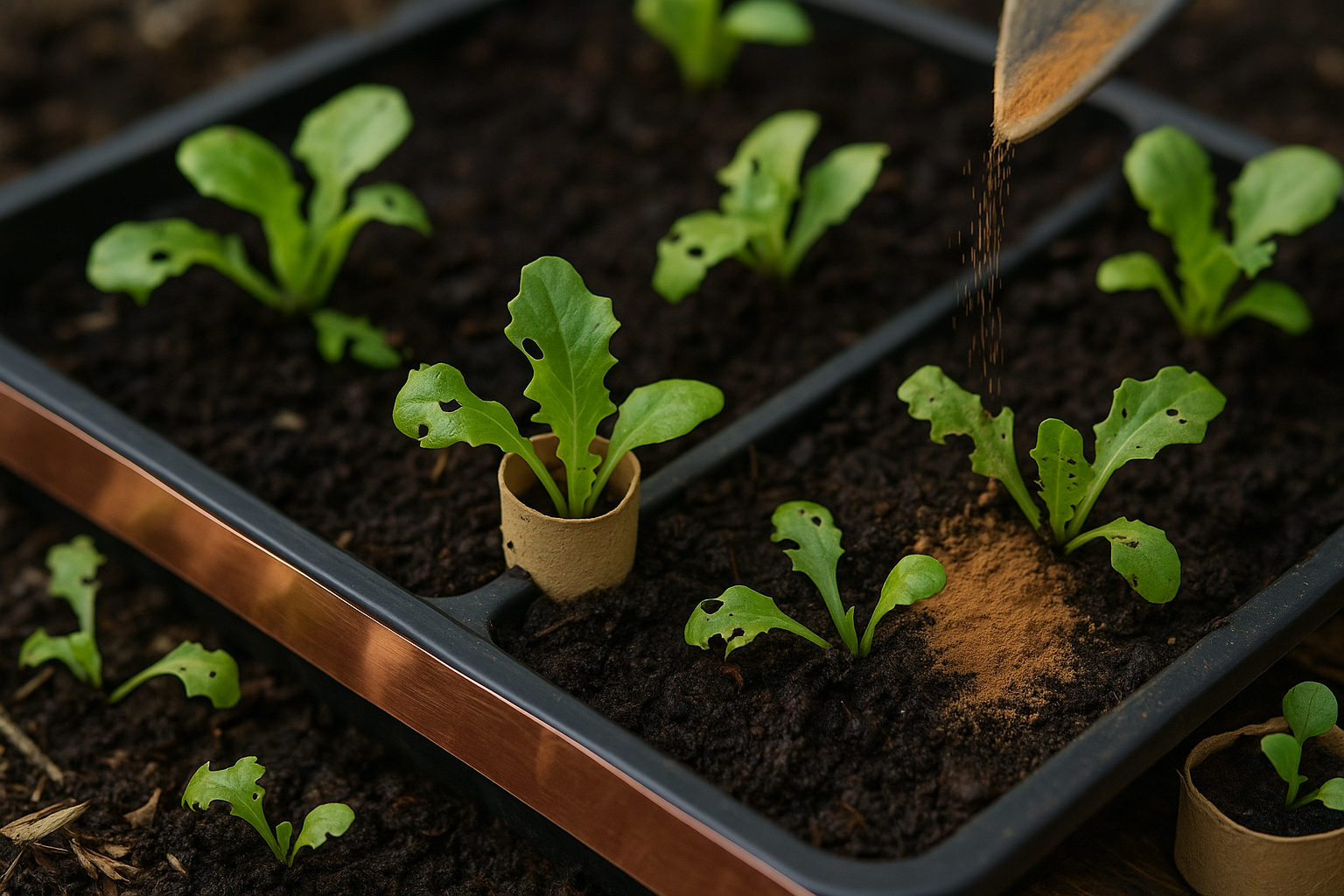
Lettuce seedlings are especially vulnerable to a range of pests and fungal diseases during their early stages. Among the most common culprits are slugs and cutworms, which chew through tender stems and leaves, often wiping out entire trays of young plants overnight.
To keep these pests at bay, try physical barriers like copper tape around seedling trays to deter slugs, or collars made from cardboard or plastic placed around each seedling base to block cutworms.
Another frequent menace is damping off, a fungal disease caused by pathogens such as Pythium and Rhizoctonia, which results in seedlings suddenly collapsing and dying.
To prevent this, always start with sterile seed-starting mix, avoid overwatering, and ensure adequate airflow around seedlings. Treating seeds with organic fungicides, like those containing Trichoderma, or dusting them with cinnamon (a natural antifungal) before planting can offer additional protection.
In the case of severe pest infestations, organic slug baits made from iron phosphate are safe for gardens, while neem oil sprays can reduce both fungal and insect activity.
For gardeners open to chemical controls, carefully applied products such as pyrethrin-based sprays for insects or commercial fungicides labeled safe for lettuce may provide relief—but always follow label instructions and prioritize organic methods when possible to protect pollinators and beneficial insects.
By combining good sanitation, physical barriers, and targeted treatments, you can give lettuce seedlings a strong, healthy start.
Preventing and Solving Leggy or Weak Seedlings
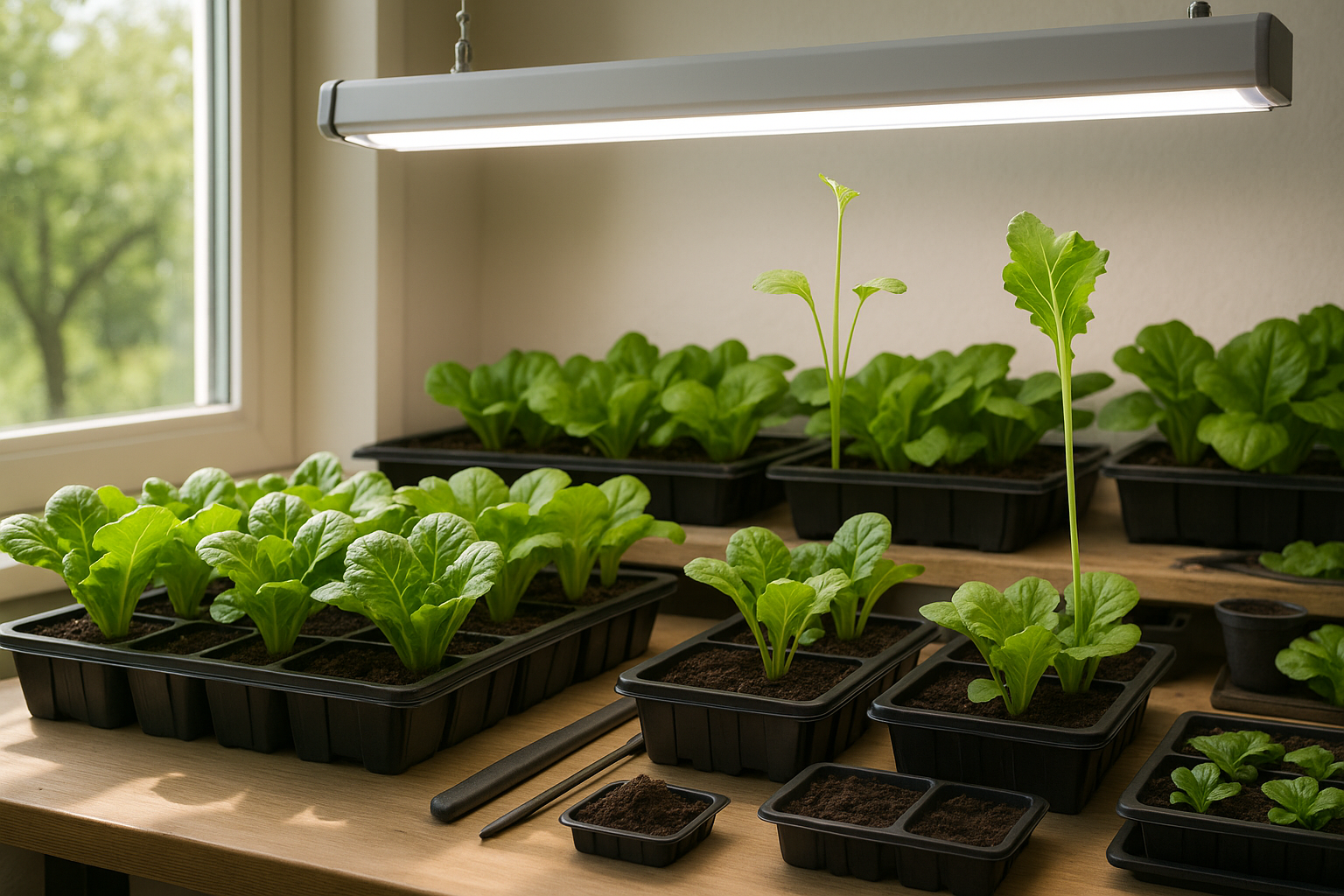
Leggy or weak seedlings are a common frustration for gardeners, often caused by insufficient light and excessive heat. When young plants stretch toward a distant light source or sit in a too-warm spot, their stems elongate rapidly, becoming spindly and fragile.
To prevent this, give seedlings as much bright, direct light as possible—ideally 12 to 16 hours under a grow light placed just a few inches above the plants. If using a windowsill, make sure it’s a south-facing window, and rotate trays regularly for even growth.
Overcrowding causes seedlings to compete for resources, so thin them early by choosing the strongest ones to continue growing and gently removing the rest. Spacing is key; follow the recommended guidelines for each species so air can circulate and each seedling has room to develop sturdy stems.
When seedlings are ready to move outdoors, prepare them through a process called hardening off: gradually expose them to outdoor conditions over a week, starting with a few hours of sunlight and wind each day and slowly increasing the time. This prevents transplant shock and encourages thicker, tougher stems.
When transplanting, place seedlings slightly deeper in the soil to cover any leggy stems. This helps them anchor securely and grow strong roots.
By combining good lighting, careful thinning and spacing, and a mindful hardening-off process, you’ll greatly increase your seedlings’ chances of thriving both indoors and once transplanted outside.
FAQ & Quick Reference Table
Here’s a quick reference table to boost your lettuce germination success:
| Parameter | Recommended Range |
|---|---|
| Optimal Temperature | 60–70°F (15–21°C) |
| Watering Frequency | Keep soil moist, not soggy |
| Common Issues | Overwatering, poor light, old seeds |
Common Questions
Many gardeners wonder, “Why aren’t my lettuce seeds sprouting?” Often, it’s because the soil is too warm—lettuce prefers cool conditions and may not germinate above 75°F (24°C).
Another common question is, “Should I cover lettuce seeds with soil?” Lettuce seeds need light to sprout, so cover them with only a thin dusting of soil or none at all.
Finally, some ask, “How often should I water while waiting for seeds to sprout?” The answer: keep the top layer of soil consistently moist but not waterlogged—a spray bottle works well.
Don’t be afraid to experiment and pay attention to the unique conditions in your garden. Observe, adjust, and enjoy healthier germination rates as you learn what works best in your environment.
Conclusion
Understanding and addressing germination challenges is the key to growing healthy, vibrant lettuce at home. With a little patience and some adjustments—like ensuring proper soil moisture, choosing the right seeds, and using gentle warmth—you’ll increase your chances of a successful crop. Don’t get discouraged if things don’t go perfectly at first; experimenting with the tips above will make each season easier and more rewarding. For more guidance, check out our articles on soil preparation, common pests, and indoor seed starting. Every challenge is a learning opportunity, and soon you’ll be harvesting lush lettuce with confidence.
